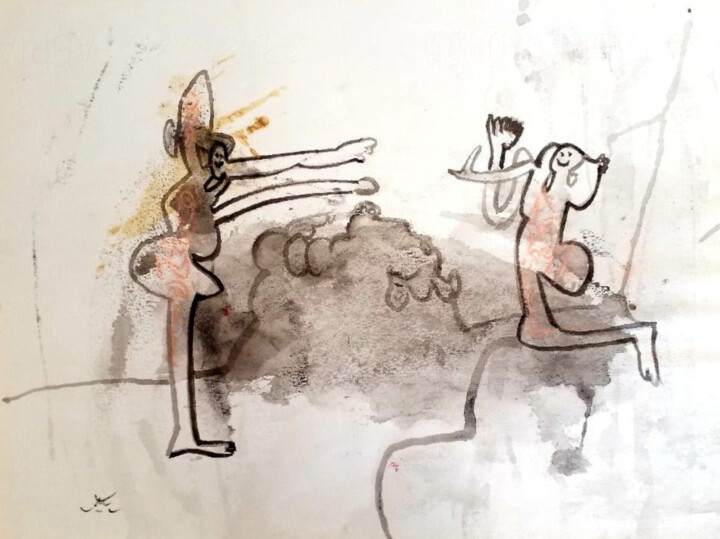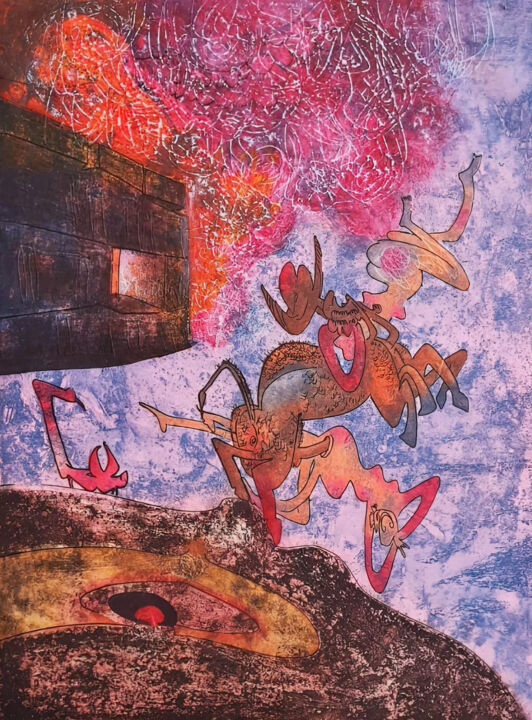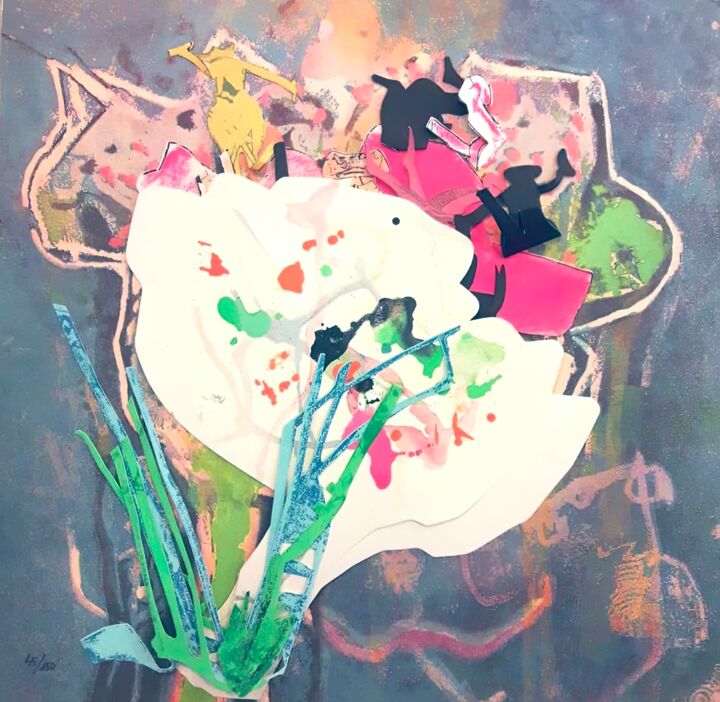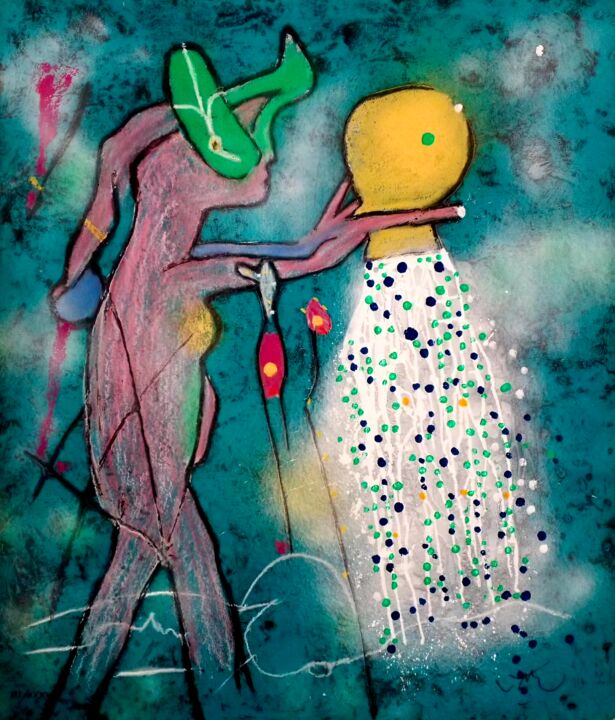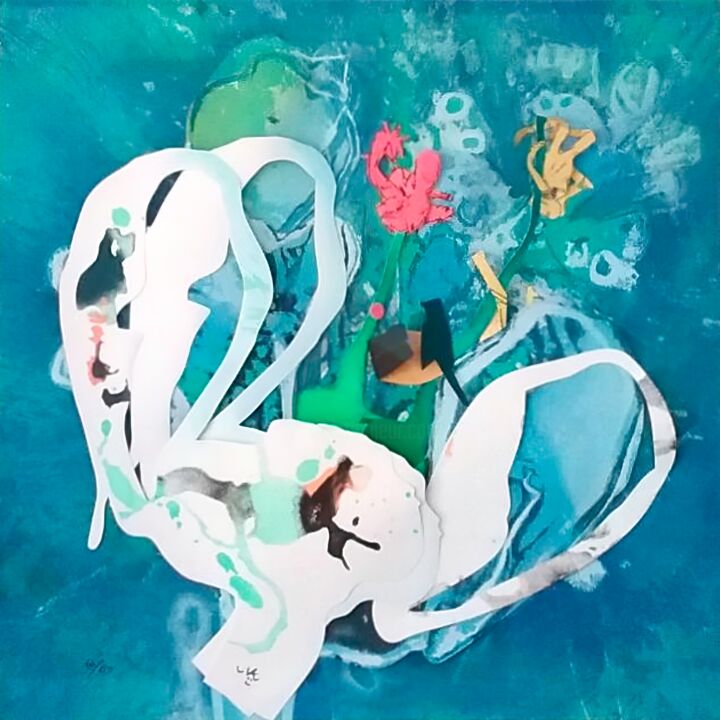Roberto Sebastián Antonio Matta Echaurren, widely recognized as Roberto Matta, was a distinguished Chilean painter who left an indelible mark on 20th-century art through his contributions to abstract expressionism and surrealism. Born on November 11, 1911, in Santiago, Chile, Matta initially pursued studies in architecture and interior design at the Pontificia Universidad Católica de Chile before fully dedicating himself to painting. His unique artistic vision and innovative techniques garnered him international acclaim, making him a pivotal figure in both the American and European art scenes. Throughout his prolific career, Matta's work was celebrated with numerous accolades, including the prestigious Praemium Imperiale. He continued to influence and inspire until his death on November 23, 2002, in Civitavecchia, Italy.
Artist Biography: Roberto Matta
Roberto Antonio Sebastián Matta Echaurren, born on November 11, 1911, in Santiago, Chile, was a prominent artist whose work significantly influenced both Surrealism and Abstract Expressionism. Matta's journey into the art world began with his studies in architecture and interior design at the Pontificia Universidad Católica de Chile. After graduating in 1935, his travels took him across South America, Europe, and the United States, where he met influential artists like Arshile Gorky, René Magritte, Salvador Dalí, André Breton, and Le Corbusier.
In 1933, Matta moved to Paris and briefly worked in Le Corbusier's studio. His encounter with André Breton marked a pivotal moment in his career, steering him towards the Surrealist movement. Breton introduced Matta to the Paris Surrealists, and Matta soon began contributing illustrations and articles to Surrealist journals such as Minotaure. By 1938, Matta had transitioned from drawing to oil painting, creating works that explored the subconscious through diffuse light patterns and bold lines, as seen in his "inscape" series and "psychological morphologies." Matta emigrated to the United States during World War II and became a key figure in the burgeoning Abstract Expressionist movement in New York. His interactions with artists like Jackson Pollock, Mark Rothko, and Arshile Gorky enriched his artistic vision. His paintings from this period, such as The Vertigo of Eros and Burn, Baby, Burn, are noted for their dynamic compositions, swirling lines, and vibrant colors, reflecting his deep interest in cosmic consciousness and existential themes.
Throughout his career, Matta's work remained deeply philosophical, addressing themes of alienation, human rights, and environmental issues. He experimented with various media, including sculpture, ceramics, and printmaking. His political engagement, particularly his support for the socialist government of President Salvador Allende in Chile, further exemplified his belief in the transformative power of art and poetry. Despite a fallout with the Surrealist group over personal matters involving Arshile Gorky's family, Matta's reputation continued to grow. He spent his later years between Europe and South America, producing epic surreal canvases that combined political themes with semi-abstract forms. Matta's mural The First Goal of the Chilean People was famously painted over by Augusto Pinochet's regime but later restored and displayed in Santiago.
Roberto Matta passed away on November 23, 2002, in Civitavecchia, Italy, leaving behind a rich legacy. His fearless exploration of the subconscious and his profound engagement with the complexities of human existence ensure his place among the most innovative artists of the 20th century. His children, including artists Gordon Matta-Clark, Sebastian Matta, and Pablo Echaurren, continue to carry forward his creative legacy.
Matta’s Style
Roberto Matta’s work stands at the crossroads of Surrealism and Abstract Expressionism, drawing on the subconscious spontaneity emphasized by Surrealism while influencing and contributing to the development of Abstract Expressionism. His intricate and dynamic compositions echo the automatic techniques of Surrealists like André Masson and Max Ernst, merging them with the viewer-dependent possibilities theorized by exile-surrealist Wolfgang Paalen. Matta's multifaceted approach, incorporating geometric and biomorphic forms, fluid perspectives, and an emotional intensity, positioned him as a key figure bridging these movements. His impact is evident in the works of Abstract Expressionist pioneers like Jackson Pollock and Robert Motherwell, who integrated elements of Matta’s spatial vision and emotive abstraction into their own innovative styles. Through his explorations of the unconscious and his embrace of expansive, dynamic canvases, Matta significantly shaped the trajectory of modern art, leaving a lasting legacy in both Surrealism and Abstract Expressionism.
Naci-Mente (1970) by Roberto Matta,
Roberto Matta, Naci-Mente, 1970. Painting, Pigments on Other substrate, 115cm x 115cm.
Naci-Mente (1970) is a quintessential painting by Roberto Matta, showcasing his mastery in blending the figurative dreamscapes of Surrealism with the dynamic gestures of Abstract Expressionism. Executed with pigments on an unconventional substrate, this large-scale work exemplifies Matta’s phantasmagorical style. The painting features a mesmerizing array of geometric and biomorphic shapes that fluidly morph into representational forms, inviting viewers into a dreamlike, multi-perspective composition. Matta’s use of vivid colors and imposing scale creates a vivid, immersive experience. Matta's architectural and interior design background, cultivated in his native Chile, is evident in the structural complexity and spatial depth of Naci-Mente. His unique approach was further shaped by his interactions with influential artists like Arshile Gorky and Salvador Dalí during his travels to Europe and the United States. This piece reflects Matta's influence on and by contemporaries such as Jackson Pollock and Robert Motherwell, marking his significant impact on the art movements of his time. Exhibited in major cities around the world, including New York, London, Santiago, Paris, Berlin, Tokyo, and Rome, Matta’s works are part of prestigious collections at the Art Institute of Chicago, the Metropolitan Museum of Art, the Tate, the Guggenheim Museum, and Moderna Museet. Naci-Mente, like many of Matta's paintings, has achieved considerable acclaim and high market value, with his pieces often fetching seven figures on the secondary market.
No Name (1970) by Roberto Matta
Roberto Matta, No Name, 1970. Drawing, Pencil on Paper, 35cm x 22cm.
No Name (1970) is a captivating drawing by Roberto Matta, rendered in pencil on paper. Though distinct from his renowned large-scale paintings, this work encapsulates Matta's phantasmagorical style and his ability to bridge the dreamscapes of Surrealism with the expressive gestures of Abstract Expressionism. The drawing showcases a delicate interplay of geometric and biomorphic shapes, which fluidly transform into suggestive, representational forms. Matta's background in architecture and interior design, honed in Chile, is subtly evident in the structural nuances of this piece. His signature multi-perspective approach keeps the composition dynamic, evoking a sense of fluidity and movement. His untitled work reflects Matta's continuous exploration of the subconscious and the complexities of human experience, themes that permeate his entire body of work. Throughout his career, Matta interacted with and influenced a host of significant artists, including Jackson Pollock and Robert Motherwell. His style evolved through his travels and associations with figures like Arshile Gorky and Salvador Dalí in Europe and the United States. Matta’s extensive exhibition history spans major art hubs such as New York, London, Santiago, Paris, Berlin, Tokyo, and Rome. His works are housed in the collections of esteemed institutions like the Art Institute of Chicago, the Metropolitan Museum of Art, the Tate, the Guggenheim Museum, and Moderna Museet. Though primarily known for his paintings, Matta’s drawings offer a more intimate glimpse into his imaginative and innovative artistic vision.
Iconic Artwork
Roberto Matta's artistic career is marked by a series of iconic works that illustrate his evolution and profound impact on the art world. Early in his career, pieces like Sick Flesh (ca. 1932-1933) and The Clown (1934) began to showcase his surrealist vision. As he progressed, his works such as Panama and Wet Sheets (1936) and La Forêt (1937) demonstrated his growing complexity and incorporation of geometric and biomorphic forms. In 1938, Matta's The Red Sun and Space Travel (Star Travel) further solidified his place in the Surrealist movement, while his Psychological Morphology series explored the depths of human consciousness. Throughout the 1940s and 1950s, Matta's oeuvre included powerful pieces like Invasion of the Night (1941) and The Hanged Man (1942), reflecting the turmoil of World War II and his burgeoning influence in Abstract Expressionism. His later works, such as Elle Logela Folie (1970) and Otto Por Tre (1971), continued to push boundaries with their dynamic compositions and innovative use of color and form. Matta's legacy is encapsulated in his extensive body of work, which spans continents and genres, earning him a lasting place in the collections of prestigious institutions worldwide.
Exhibition History
In 2019, Roberto Matta's work was featured in the group show "The Gift of Art" at the Pérez Art Museum Miami (PAMM). This exhibition showcased significant artworks from PAMM's permanent collection, focusing on Latinx and Latin American artists. Alongside Matta, the exhibition included prominent artists such as José Bedia (Cuba), Teresa Margolles (Mexico), Carmen Herrera (Cuba), Oscar Murillo (Colombia), Amelia Peláez (Cuba), Zilia Sánchez (Cuba), Tunga (Brazil), and Wifredo Lam (Cuba), highlighting the rich and diverse contributions of these artists to the contemporary art scene.
Roberto Matta’s legacy in the art world is profound and enduring. His innovative blending of Surrealism and Abstract Expressionism created a unique and dynamic visual language that explored the subconscious and cosmic consciousness. Matta's work not only influenced his contemporaries, such as Jackson Pollock and Robert Motherwell, but also inspired future generations of artists. His extensive career, marked by numerous accolades and exhibitions worldwide, underscored his significant contributions to modern art. From his early architectural studies in Chile to his pivotal role in the New York and European art scenes, Matta's fearless exploration of complex themes and his commitment to artistic expression have cemented his place as a towering figure in 20th-century art. His artworks continue to be celebrated in prestigious institutions globally, ensuring that his visionary legacy remains a vital part of the cultural and artistic discourse.


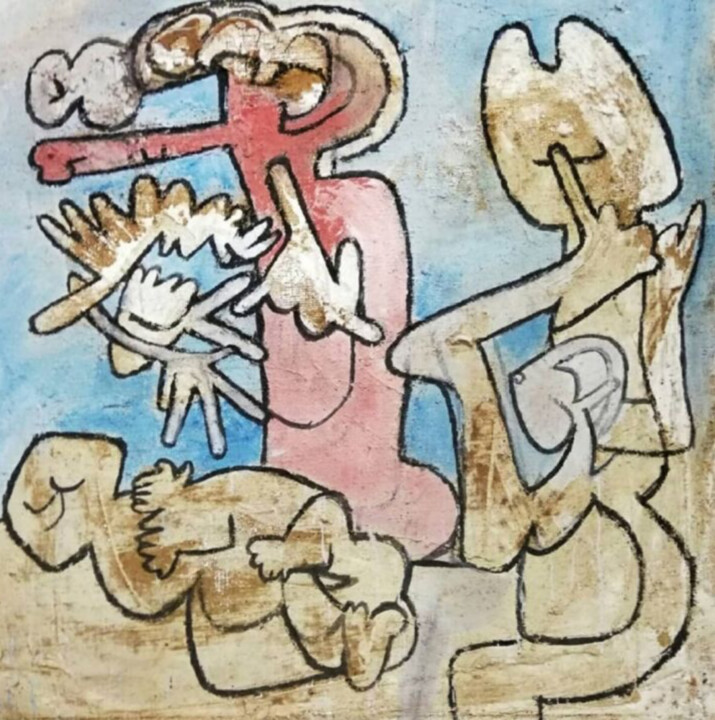

 Selena Mattei
Selena Mattei

